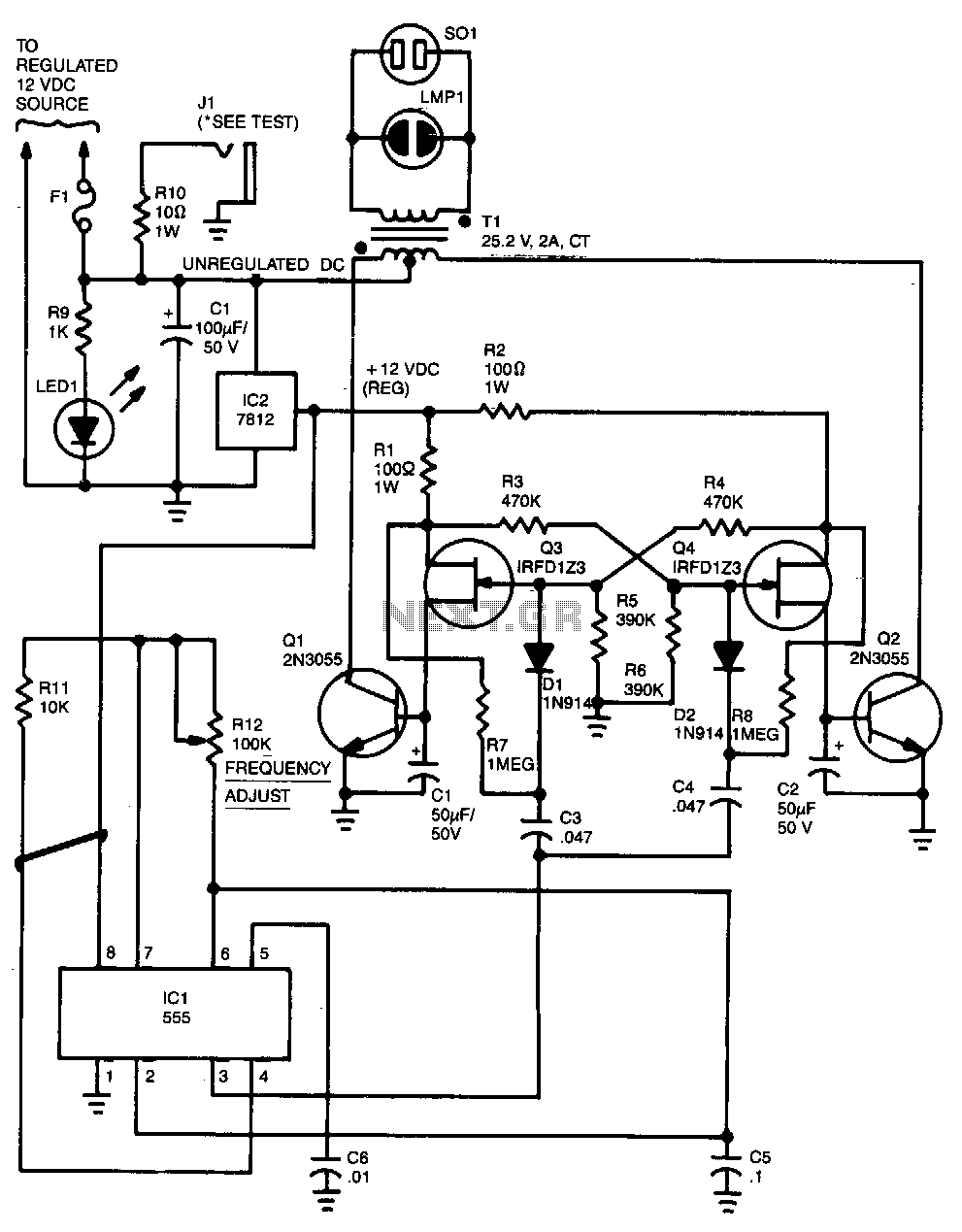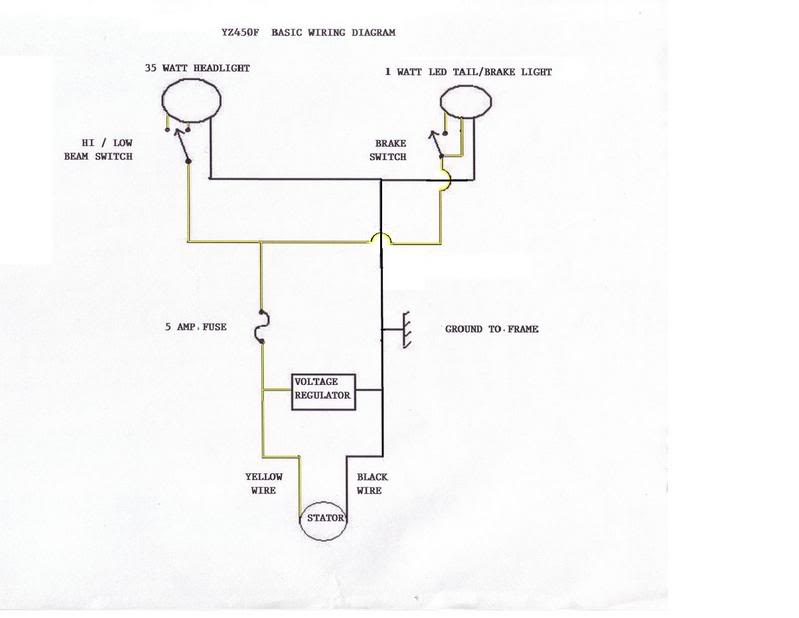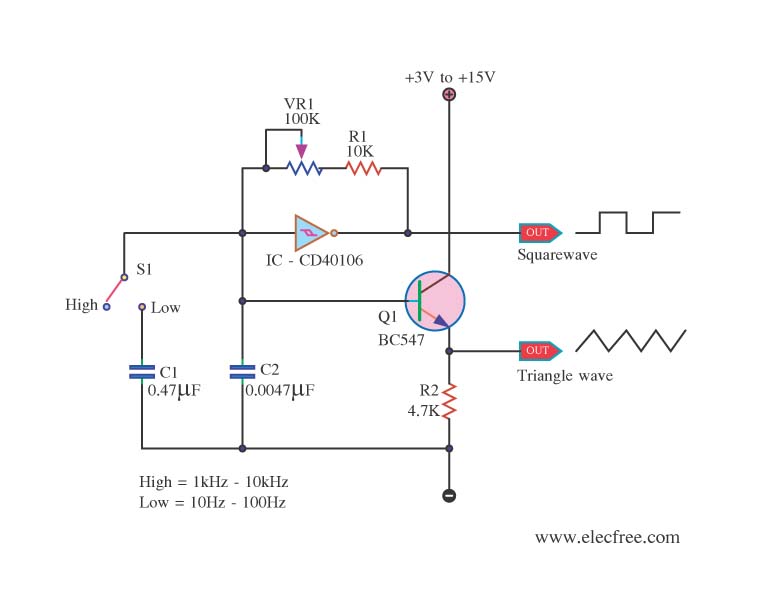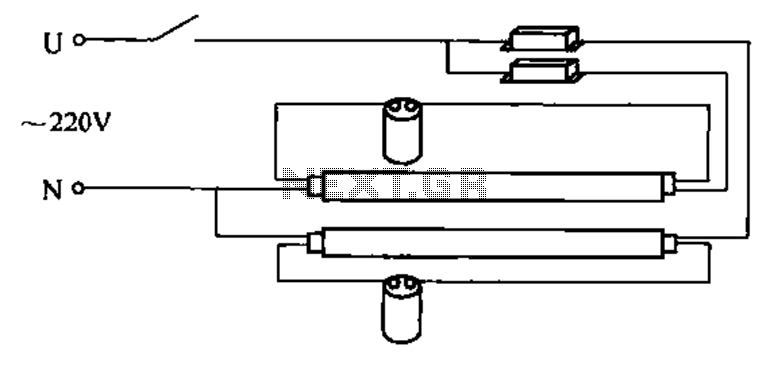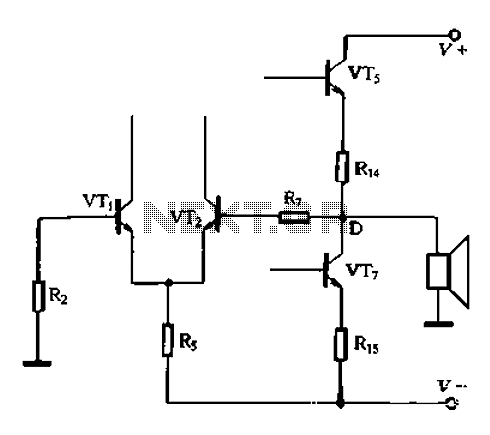
16w 12v fluorescent inverter with AC output
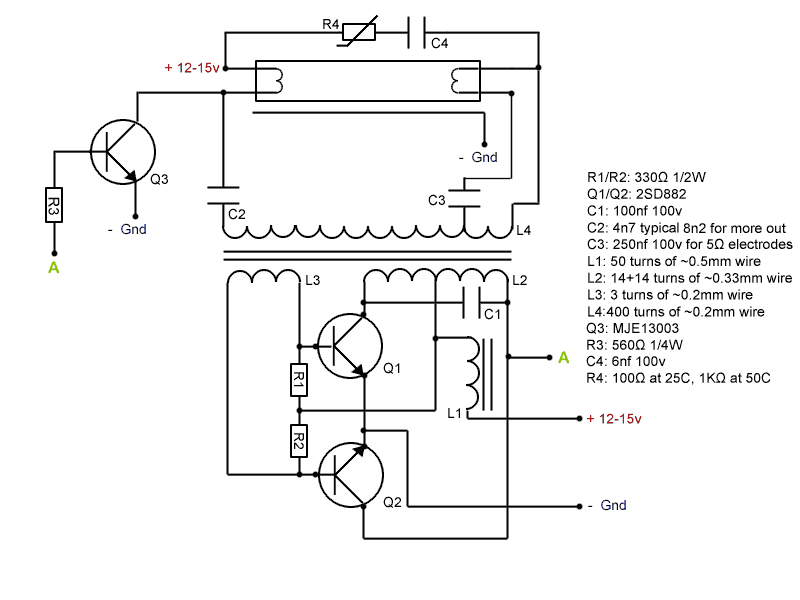
This inverter is designed to operate fluorescent lamps ranging from 8W to 20W, with optimal performance achieved using 16W tubes. It preheats the electrodes and maintains their temperature during operation.
The inverter functions by converting direct current (DC) into alternating current (AC) to power fluorescent lamps. The preheating process is crucial, as it enhances the efficiency of the lamp's electrodes, allowing for a quicker start and reducing flicker. The inverter typically incorporates a high-frequency oscillator circuit, which generates the necessary AC voltage to ignite the gas within the fluorescent tube.
Key components of the inverter include a transformer, which steps up the voltage to the required level, and a series of capacitors and inductors that help filter and stabilize the output. The circuit is designed to provide a consistent and reliable power supply, ensuring that the fluorescent lamp operates at its rated efficiency.
Additionally, safety features are often integrated into the design, such as overcurrent protection and thermal shutdown mechanisms, to prevent damage to both the inverter and the lamp. This inverter is suitable for various applications, including residential and commercial lighting solutions, where energy efficiency and longevity of the light source are of paramount importance.
Overall, this inverter represents an effective solution for driving fluorescent lamps, ensuring optimal performance through its preheating capability and robust electrical design.This inverter will drive any fluorescent lamp between 8w and 20w but works best with 16w tubes. It preheats the electrodes and keeps them heated while.. 🔗 External reference
The inverter functions by converting direct current (DC) into alternating current (AC) to power fluorescent lamps. The preheating process is crucial, as it enhances the efficiency of the lamp's electrodes, allowing for a quicker start and reducing flicker. The inverter typically incorporates a high-frequency oscillator circuit, which generates the necessary AC voltage to ignite the gas within the fluorescent tube.
Key components of the inverter include a transformer, which steps up the voltage to the required level, and a series of capacitors and inductors that help filter and stabilize the output. The circuit is designed to provide a consistent and reliable power supply, ensuring that the fluorescent lamp operates at its rated efficiency.
Additionally, safety features are often integrated into the design, such as overcurrent protection and thermal shutdown mechanisms, to prevent damage to both the inverter and the lamp. This inverter is suitable for various applications, including residential and commercial lighting solutions, where energy efficiency and longevity of the light source are of paramount importance.
Overall, this inverter represents an effective solution for driving fluorescent lamps, ensuring optimal performance through its preheating capability and robust electrical design.This inverter will drive any fluorescent lamp between 8w and 20w but works best with 16w tubes. It preheats the electrodes and keeps them heated while.. 🔗 External reference
